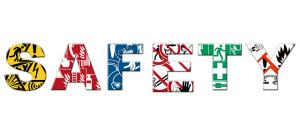 Safety in the workplace starts with preparation. Your employees need to know what to do if a fire, chemical spill, natural disaster, civil disturbance or other emergency occurs. Federal guidelines from the Occupational Safety and Health Administration (OSHA) tell you which workplace safety drills to perform as you prepare everyone in your company for emergencies.
Safety in the workplace starts with preparation. Your employees need to know what to do if a fire, chemical spill, natural disaster, civil disturbance or other emergency occurs. Federal guidelines from the Occupational Safety and Health Administration (OSHA) tell you which workplace safety drills to perform as you prepare everyone in your company for emergencies.
Create an Emergency Plan
OSHA guidelines require many companies to create an emergency plan. It’s also a good idea for companies that are exempt because it keeps employees safe and can prevent confusion and property damage. The plan includes escape routes and assigns employees to manage escape routes. It also includes procedures for shutting down equipment, counting employees after an emergency, providing medical care and reporting emergencies to the appropriate authorities.
Assign a Safety Coordinator
Someone in your company should serve as the safety coordinator. This person answers questions about the emergency plan, organizes required safety paperwork and overseas the drills.
Sounds the Alarms
Choose emergency alarms with a distinctive sound so that all your employees can recognize them. Hang them in locations throughout your building so that all employees can hear them. Hook up an auxiliary power source, too, to ensure the alarms sound even if the power goes out. When you perform safety drills, use the alarm to signal the drill’s start.
Mark the Evacuation Routes
Evacuation routes allow employees to exit the building when an emergency arises. Based on your building’s layout, choose several routes that allow quick and easy access to the outside. Emergency routes must also be wide enough for your employees to exit the building safely and kept clear and free from debris and clutter at all times. Post drawings of the routes in prominent locations around the building, and clearly mark the routes with bright, fluorescent paint or stickers.
Perform Regular Safety Drills
Creating a safety plan isn’t enough if your employees don’t know how to handle an emergency. At least twice a month, perform safety drills. The local fire and police departments should be present to share any tips on how you can improve the drills. Afterwards, meet to discuss improvements.
Also, if you change the emergency plan in any way, schedule a meeting. Ensure everyone knows and understands the new plan.
Safety comes first in any work environment. Begin today to prepare safety precautions and drills for all departments of your company. Then follow federal guidelines and practice until your employees evacuate the building properly and know exactly what to do. Your preparations could save lives, so don’t skimp on any of the details.





